Art of the Genre: Kickstarter, Why I Hate Stretch Goals and You Should Too
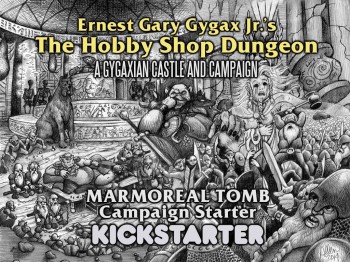 Over the past three years I’ve written a lot about Kickstarter. In fact, I went back and looked at the Art of the Genre archives and found a rather impressive eight articles dedicated to the subject:
Over the past three years I’ve written a lot about Kickstarter. In fact, I went back and looked at the Art of the Genre archives and found a rather impressive eight articles dedicated to the subject:
The Art of Kickstarter,
The Art of Kickstarter #2
The Pillaging Of Kickstarter
Why and How I Build a Kickstarter
The Pillaging of Kickstarter #2
Front Loading a Kickstarter
The Joy and Pain of Kickstarter (and how backed projects still fail)
Kickstater, It Really Shouldn’t Be About the Stuff We All Get
In those you can find all kinds of advice, statistics, opinions, and introspection, (or as my non-fans like to say, my sour grapes). But if I’ve learned anything over the course of my time on the platform, it is that it is constantly changing.
Sure, there are some static rules, but even those have some latitude if a developer happens to get lucky. And let me tell you, there is a lot of luck involved out there, as well as blind devotion.
What do I mean by blind devotion? I mean that not only is there a learning curve for the developers in Kickstarters, but there is also a learning curve for those that choose to support Kickstarters, ala the backers. Backers rarely seem to take a look at the developer’s track record on Kickstarter and shy away, especially in the case of ‘First Created’. The dollar by dollar pledge totals for ‘First Created’ projects versus veteran Kickstarter developers is staggering in the small market, and I say the primary reason for this is unreasonable stretch goal mentality and promises, The Forking Path’s The Doom that came to Atlantic City being a prime example, with 1,246 backers at $122,874 in pledges (remember those totals for later). We all know The Forking Path took the money and ran, but why in the name of Cthulhu did so many folks pledge a complete unknown developer in the first place? I guess because people rarely study history, or at least learn from it, because it always repeats. Too many stretch goals, too many promises, too good to be true? Well, you get the idea.
Kickstarter, even today, is still filled with successfully unfulfilled campaigns, as shown in the past thirty days by campaigns like Alyssa Faden’s Torn Armor (cancelled on August 9th), or the Pathfinder MMORPG (which in 2 separate Kickstarter campaigns raised $1,399,037 and cancelled on Sept 2nd), to name just a few. Tenkar’s Tavern did a nice post on the Far West Kickstarter last week to once again shows how successfully funded campaigns continue to fail, and I went into some detail about this in my ‘Joy and Pain’ article in the first paragraph.
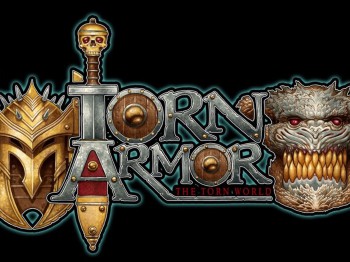 I’m still impressed, however, when projects like Ernie Gygax’s Marmoreal Tomb draws an astounding $126,109, and 1,284 backers, for a project creator who has never before run a Kickstarter campaign (do those numbers sound familiar?). As a ‘First Created’ developer, Ernie’s campaign, which was run exceptionally well (by his business partner Benoist Poire), was one of those projects that linked its success to a plethora of stretch goals. This isn’t a slam on Ernie, far from it as he and I are each part owners at Gygax Magazine and he is a great guy who loves and lives this hobby, it is just an observation on things inside the Kickstarter framework that should be taken into consideration (but of course I backed it because it is fantastic!).
I’m still impressed, however, when projects like Ernie Gygax’s Marmoreal Tomb draws an astounding $126,109, and 1,284 backers, for a project creator who has never before run a Kickstarter campaign (do those numbers sound familiar?). As a ‘First Created’ developer, Ernie’s campaign, which was run exceptionally well (by his business partner Benoist Poire), was one of those projects that linked its success to a plethora of stretch goals. This isn’t a slam on Ernie, far from it as he and I are each part owners at Gygax Magazine and he is a great guy who loves and lives this hobby, it is just an observation on things inside the Kickstarter framework that should be taken into consideration (but of course I backed it because it is fantastic!).
Now anyone who has read my work before on this subject should understand how much I hate stretch goals. My reasoning is two-fold, the primary of which is that they delay production and delivery of the product which hurts consumer relations on the platform, and secondly because they typically put Kickstarters in jeopardy of internal production collapse.
Take Torn Armor for example. Another ‘First Created’ project from a developer, and it topped out at $67,742 dollars from 561 backers with an average pledge total of $120 per backer. Impressive, yes? I certainly think so, considering my personal average backer pledge total at Art of the Genre is around $20. But again, I never over-promise and always over-deliver.
Alyssa, who ran the project, is an incredibly intelligent business woman who draws an upper 5% of the U.S. average income from a career in the corporate world. Such an individual should have more business & financial knowledge than the bulk of Kickstarter entrepreneurs where running such a campaign is concerned and yet her final email on the project to backers, posted on August 9th 2015 (Successful funding happened on April 4th 2013), although eloquent and explanatory, was highlighted by the following: It is therefore with a great deal of regret that I am calling and end to Torn Armor. There will be no more updates.
Now I love Alyssa, we are friends, she did the maps to my Five Year War novel series and even credits me in her Kickstarter Torn Armor page, but she was still a first time developer in the gaming field that was given $67,742, the bulk of which was built on stretch goals for miniatures for her game. It was the miniatures that killed her because she paid for them up front to a miniatures company that subsequently closed its doors, went bankrupt, and kept her money. Alyssa assumed that the RPG industry was like any other business market she’d worked with in her own corporate field, and yet it is anything but. This industry is replete with transient, poor, jaded, and struggling second & third job working fans and failed and fired developers. Those folks might not be the norm, certainly, but other than Paizo & Wizards of the Coast, or Privateer & Games Workshop, or Fantasy Flight & Dwarven Forge, you are likely dealing with someone working out of their garage. Still, there are ‘garage shops’ that are fantastic as well, but for every Joseph Goodman (Good) there is a Mike Nystul (Bad), and unfortunately for Alyssa she found a Nystul.
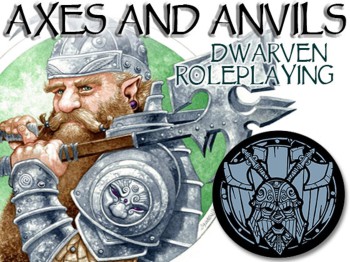
And that is the onus of my issue with stretch goals, they look great on paper but project developers, especially those who have never done this before, have no real idea what they are getting into with outside contracting in this field. They believe that money in hand fixes anything and makes the wheels of industry turn, but that isn’t always the case with games.
Speaking of money and time, remember that all developers get this money in a lump sum between two and three weeks after the campaign closes. The bulk of these folks aren’t ‘money people’, and thus don’t know what to do with that total so it begins getting spent, hopefully on the project, but nonetheless it can evaporate pretty quickly. Once gone, there is no golden parachute, and the longer the project is delayed in delivery, the less money is left to produce & ship it, so the more stretch goals, the longer lead times, and the less money available to fulfill them. That, again, is a recipe for disaster. I mean, I’m pretty sure these developers of doomed projects didn’t go into this with the idea to scam people (although there are a few!), but never having done this before, they quickly went into the deep end and drowned. Thus, really, really, watch the ‘First Created’ tag, as it is always there for you to see under the developers profile front and center and if those projects look like shooting rockets, the track record shows that there is a pretty good chance they will explode before your eyes.
Now back on topic, the miniatures trap is not the only outside contracting pitfall that developers can fall into, as art is also a problem. A Kickstarter a couple years ago from Kobold Press (yep, the Wolfgang Baur Kobold Press, so not like a fly-by-night operation) promised Wayne Reynolds art for the product and never even asked Wayne if he could do it, just assuming that if they had the money he would do the work. Not smart, and Wayne didn’t agree. They aren’t the only ones concerning Wayne either. This sort of thing doesn’t stop there. Back to the Marmoreal Tomb, which just ended last week. It promised artist Jeff Easley covers for their base product and all its expansions in a stretch goal (awesome, but yikes!),. Once again the developer didn’t phone or email Jeff with a ‘what if’ scenario. I’ve had a fully paid for standing contract for an AotG cover painting from Jeff for 18 months that still isn’t complete, so when I asked Jeff about the Gygax project, and if they’d asked him about it, he said ‘No…I saw him reference it. Gonna have to get in line…’. So Jeff’s current backlog is at least one painting on my behalf still pending, plus anything else he has picked up in the past year and a half, and then the Marmoreal Tomb Kickstarter promised multiple covers, so assuming they stay true to their stretch goal word, are we talking two plus years of delays on cover art? Who knows? And Jeff has a scheduled MRI on his back which has been slowing down his painting even further, something else to take into consideration. Unlike Wayne, Jeff will certainly take the work, so the project is good on that end, but the time is problematic.
The bulk of popular artists are booked six months to a year in advance, and even lesser known artists might have a two or three month backlog, yet many first time developers seem to think artists are just sitting around with an empty canvas waiting for the phone to ring.
Stretch goals also bring up the backer numbers, and as a small developer, the more backers you have the greater the difficulty in fulfillment. 500 backers look fantastic on paper, but try shipping 500 packages that you hand address (or Exel them in labels and then peel and press those labels), box, and drag to the post office. It’s a time suck nightmare, not to mention the cost, and the bulk of projects boast free shipping to U.S. backers. Time, postage, and packaging for a single book can run upwards of $5.00, let alone International Shipping which requires extra hand written custom forms, postal waits of hours for a dozen packages, and $20.00 and up ‘per unit’ costs.
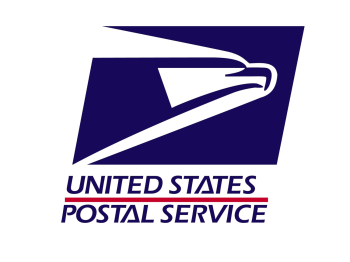
Alyssa and Torn Armor offered a ‘Free International Shipping’ stretch goal and I nearly vomited in my mouth when I read it. My last Kickstarter required me to ship 21 copies of The Folio #3 overseas and to Canada. Each package cost between $16.00-$20.00 depending on location, so roughly an additional $388 in postage alone, not to mention my time and packaging (nearly 5% of my overall Kickstarter project dollars just for international shipping). My U.S. postage, which I covered on my end, was $750, a massive 8% of my project pledge total.
Torn Armor was shipping large boxed games (think Fantasy Flight board games), and if perhaps 1/5th of those were international (I’d say likely with free international shipping), the cost might have been $5000 if each cost $50.00 to ship, although that is just a guess. That would be close to 10% of the Torn Armor project pledge dollars.
InXile Games, which has now had three video game Kickstarters at a million + dollars each, recently finished its campaign for Bard’s Tale IV and charged all backers $8.00 for U.S. shipping, a procedure I’d never seen before put into practice on the platform. Perhaps having all backers pay for U.S. shipping is the next stage of Kickstarters as developers continue to look for ways to make ends meet, but again, new developers beware of unforeseen costs, especially for a large number of backers. Ernie now has 1,284 backers to deal with, and just ask any developer who has ever done a project that goes late (and The Marmoreal Tomb will be late because of stretch goal lead time even if nothing else goes wrong) just how angry and unkind some more vocal backers can be. The Folio #3 finished its campaign on July 3rd 2015 and I shipped physical copies of the product to all backers by starting on August 12th 2015. That is 41 days from the close of the campaign, and you don’t even get your money from the campaign for 18 days, so in essence I completed the product, had it printed and shipped to me, and then got it out to the backers in and astounding 23 days, and STILL, I had people emailing me asking when it would ship.
Time delay is an absolute killer for Kickstarters campaigns and for small businesses in general. If you miss your target release date (and you will with too many stretch goals, especially ill-conceived ones) then your industry clout is going to tumble. Stretch goals are the absolute fastest way to crush a small company, especially when the development of those goals are outside the internal production capabilities of the company (or person) responsible for the campaign.
Friends often tell me, ‘Hey man, you should do miniatures, or computer based development, etc’ and I smile and try not to engage. You see, the more things I can’t roll up my sleeves and do myself, the more things that can go wrong with my business. The more people you get involved with your project (the bulk of which will be doing the work in their off hours since they hold a regular 9 to 5 job), the more chances you have of things getting delayed (or cancelled). Sabre rattling won’t help you on an rpg freelance contractor, the bulk will just stop talking to you, and your deadlines mean nothing to them as they are likely doing the work as a 2nd income to pick up more products for their hobby as a slush fund outside their family bank account. Hell, I’ve had best friends of mine delay me in the past (all artists), so you really can’t trust anyone to do the work you require on time, remember that as Rule #1 for developers. My friend Mick Leach, who has had two funded Kickstarter campaigns that haven’t been fulfilled (again, ‘First Created’ and high $), had a contractor die on him, literally, which tanked his projects.
At Art of the Genre, I have a very small team, and still, if one of them goes sideways, I’m screwed, so I have a back-up plan for each, and even then try to keep everything I can in my own hands because the campaign responsibility is ultimately on me, and that means I can finish it myself if all hell breaks loose. Thankfully, the bulk of Ernie’s Marmoreal Tomb looks to rest on him and his partner, other than the Easley artwork, so they’ve kept the workload in house as well and can do the production themselves if need be, which was smart.
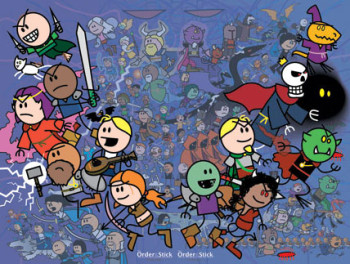
So where am I going with all of this? I guess I’m saying that if you are thinking of running a Kickstarter, don’t dream too big! Set a reasonable goal, understand your bottom line costs, and do stretch goals that limit additional costs, contractors, and lead time.
If you are a prospective backer, be very leery of ‘First Created’ projects, especially those that are blowing up with huge dollars and stretch goals (and above all else, miniatures!). That is a mine field of trouble for everyone, and very few such projects deliver. Even one of my all-time favorite projects that I posted about in a previous Kickstarter offering, The Order of the Stick Reprint Drive from 2012, still has yet to fulfill all rewards, and yes, that was a ‘First Created’.
Check out a creator’s track record, and see what true success really looks like. Happy backers, fast delivery times, and multiple projects fulfilled. Artist Jeff Dee is a prime example of this. He has successfully run 19 Kickstarter campaigns, the largest of which had 362 backers at $22,212 in pledging ($61 average pledge), while the remainder of his projects were all less than 100 backers and $10,000. One day I hope to rival him, as Art of the Genre currently has run 10 successful and fulfilled Kickstarter campaigns with the 11th currently live on Kickstarter right now (my high was 573 backers & $13,417). You’ll also find AotG fulfills their physical products within two months of the project close and two weeks for digital products. That, for all you scoring at home, is how you keep backers happy, which means my stretch goals are small, well-planned, and on me!
If you like what you read in Art of the Genre, you can listen to me talk about publishing and my current venture with great artists of the fantasy field or even come say hello on Facebook here. And my current RPG Art Blog can be found here. Also, for my hardcore fans and those that love small press books, I’ve launched my latest crowd-sourcing campaign that I’m determined to have fun with it by doing my best Jaws 40th Anniversary tribute in the Kickstarter video, so check it out!
Scott,
Thanks for the back story on how to do successful Kickstarter campaigns. I can say as a backer for a number of Kickstarter campaigns, including all of Scott’s Folio modules, Scott is by far the fastest deliverer of both electronic and physical goods. In fact for Folio #3, when I got the message they were in the mail, I was thinking “already?!”
Thanks for the informative article. I have been doing some courses on project management and so many of the pitfalls you mention brought a knowing smile.
I agree with everything here. Although my business partner and I have pulled off one successful IndieGoGo project, we were briefly scuppered by the additional art stretch goal, causing us to overrun the deadline by a few weeks. Many artists in the profession are flaky when it comes to deadlines, and its often wise to have a second ‘on call’ artist in reserve to cover shortfalls.
In addition I have personally seen several KickStarter projects go under or end up costing considerably more than they raised, because of postage – especially international postage from the States, which has literally skyrocketed over the last decade.
My personal rules whenever a KS option is brought up by fans are threefold. First “Never start a KS until the project has _finished_ being written”; second “Don’t offer any stretch goal options which cannot be covered by the printer”; and third “Always separate the cost of postage from the project itself”.
I’ve backed several Frog God Games kickstarters (for Pathfinder). All have gone well and delivered as expected.
I’m also backing Judges Guild’s ‘City State of the Invincible Overlord’ (also for Pathfinder). It has been snake-bitten (by multiple snakes) and is still moving forward, but I’m not convinced they’ll be able to pull everything off as promised. At least, not without asking for more money.
While they’ve got a pedigree in the RPG business (though from a long time ago), this was their first actual KS and it’s been very rough.
https://www.kickstarter.com/projects/judgesguild/city-state-of-the-invincible-overlord
NOLAbert: Thanks for supporting my Kickstarters, and as always, my commitment to seeing this product into your hands a quickly as possible is paramount.
Tiberius: 🙂 There is another knowing smile for you
Pete: Great suggestions, and I mirror them in my ‘Front Loading a Kickstarter’ post.
Bob: I really can’t say enough good things about Frog God Games. They are fantastic, and actually a miniatures Kickstarter just failed that had nothing to do with them other than using their license for the miniatures that were to be produced. What did FG do? They opened their back catalog and fulfilled all pledges $ for $ on when they absolutely didn’t have to. Troll Lords is also another small company that has an excellent KS track record for completion.
Yeah, I thought that doing the $ for $ match was pretty cool.
I own all the Northlands Saga modules and signed on for the new KS – it’s a solid series that has improved with each new module (four so far, I think…)
I’m totally behind what Bill, Greg and Frog God are doing with The Lost Lands. I’ve been meaning to post again about the project, but just haven’t done so.
https://www.blackgate.com/2014/10/24/the-lost-lands-a-new-campaign-world-for-pathfinder/
The problems discussed here are why I only back projects by known publishers for niche books that otherwise might not be viable. An example, and my latest backing, would be The MX Book of New Sherlock Holmes Stories which has been printed and will be arriving in a couple of weeks. It’s a UK item and the US shipping is tacked on to the pledge, very sensibly, considering it’s three volumes, 400 page each, printed books.
I agree with you on the stretch goals. I back games, primarily, and have had seen some nightmares, namely Glory to Rome, which promised $3 worldwide shipping and cost him his house.
The other painful was Moongha Invaders by Martin Wallace, he added plastic miniatures which have delayed the project by 2 years.
R.K.: Funny, I was delayed (with art) on a KS once because of R.K. Post getting his illustrations to me late. Thus, I blame that on anyone with those initials 😉
JLB: Miniatures & Shipping, the death of many a great Kickstarter campaign.
Hey R.K.: thanks for backing the Holmes anthology – I’ve got a story in volume three!
There are some solid writers in the massive collection and I’m looking forwards to working through it.
A comment from Judges Guild on their snake-bit ‘City State of the Invincible Overlord’ kickstarter (due December, 2014):
“We are disappointed with it as well and also not very happy. We initially launched this without the minis, Mick threw a fit about it; so then we included them as stretch goals at $100k and $150k. He didn’t like that either.
So then we threw them in the mix with the maps and adjusted the stretch goal spacing, but not by enough. We estimated that more people would be interested in the minis than actually were. Needless to say, we’re never doing minis in a Kickstarter again.”
Minis caused serious ripple problems. I actually can’t figure out the status or project completion date of this KS any more, though JG says it will be completed.
As someone who backs a lot of projects (1200+) when questions of stretch goals come up I mention in comments why backers and creators should be careful about adding them. For reasons you’ve mentioned above:
1. Delays which always upsets first time backers
2. Delays which most first time creators won’t handle properly (frequent updates explaining delays – instead they go “silent”)
3. Run out of money and unable to fulfill goals (go silent instead of keeping backers up-to-date – it’s surprising what we’ll updated backers might suggest & do to help)
4. Unable to actually do tech required for stretch goals leading to running out of money and never delivering
[…] at BG have been a huge help while I worked out my plans. At the last minute, his post on “Why I Hate Stretch Goals and Why You Should, Too” saved me from a few mistakes I was about to make. I still have stretch goals, but my reward […]